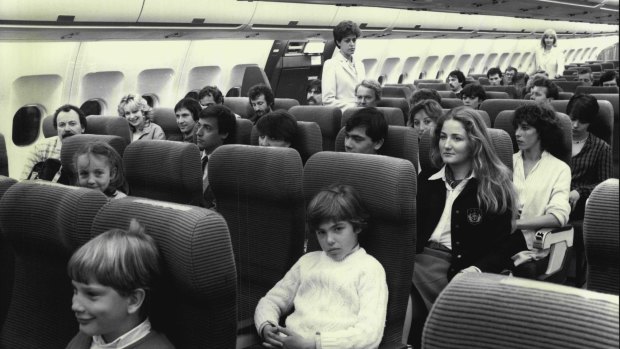By Michael Gebicki

Economy seats are narrower aboard some carriers than in the past, and aircraft are generally flying with more seats occupied.Credit: Airbus Industrie
Squashy seating is a universal complaint among economy-class flyers, but is it really tighter today than in the past?
The answer is maybe, but it all depends on the aircraft type and the period.
On a flight aboard a Boeing 707 in the late-1960s, seat pitch was between 86 and 91cm.
Aboard a Boeing 727 of the same period, widely used as a workhorse on domestic routes, seat pitch was about 76cm.
On a typical Qantas or Virgin domestic flight in economy class today seat pitch is about 78cm, so we're better off now than we were flying in that squashed and noisy 727 cabin, although one of our low-cost carriers might shrink that figure to as little as 72cm.
On the bright side, seat backs are slimmer, which gives you a few precious extra centimetres of leg room.
The biggest change, however, is us. Compared with her 1960s sisters, the average Australian adult woman is now 2cm taller and 7kg heavier.
The average male is now 5cm taller and 14kg heftier.
Seat width is one statistic that is generally overlooked when we're talking about comfort but it's crucial.
Economy seats are narrower aboard some carriers than in the past, and aircraft are generally flying with more seats occupied.
No wonder we're feeling squashed.
Sign up for the Traveller newsletter
The latest travel news, tips and inspiration delivered to your inbox. Sign up now.